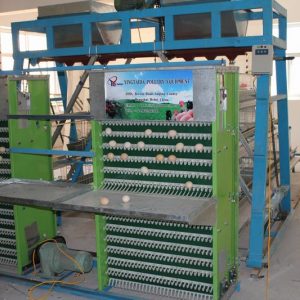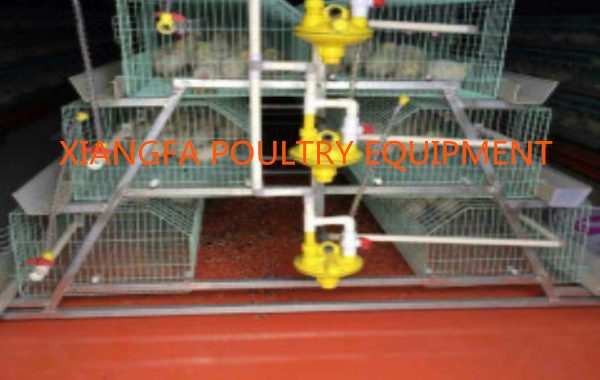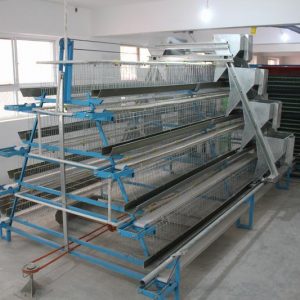
Precautions for raising chickens in the orchard
1. Choose a good variety.
The success of raising chickens in orchards depends on the type of chicken. Orchard raising chickens is a grazing-based feeding method supplemented by house feeding, so local chicken breeds with strong adaptability, strong disease resistance, rough feeding resistance and diligent foraging should be selected for feeding. At the same time, it is necessary to determine the appropriate breed according to market demand. Generally, small breeds should be selected, such as Guangdong Sanhuang Chicken and Guangxi Ephedra Chicken. For the Spring Festival market, large breeds such as Xingza 882 should be selected. However, fast large chickens such as Avian and AA are not suitable for orchard farming due to their fast growth, low activity and high environmental requirements.
Second, adjust the temperature.
The biggest feature of orchard chickens is that the chicks are transferred directly to the orchard for field feeding after the temperature is removed, so the environmental temperature is unstable, so the temperature should be adjusted during the brooding to adapt to the orchard environment. Newborn chicks have a body temperature 1 to 3°C lower than that of adult chickens, and have poor cold resistance and heat insulation capabilities. The brooders must be carried out in the brooding room, and the temperature should be adjusted according to different seasons, different feeding amounts, brooding room size, feeding density, and insulation methods. Keep the temperature at 33-35℃ for the first week, 31-33℃ for the second week, and 28-31℃ for the third week. After gradually transitioning to the natural temperature, feed for one week and move to the orchard for rearing.
Third, set up a canopy.
According to the size of the flock and the area of the orchard, some linoleum sheds should be set up to protect the chicks from rain and rest. The quality of the shed is not high, as long as it can avoid rain, summer heat, supplementary feeding, and rest. This is a necessary facility. It is very important to prevent the chickens from being hit by the rain, the sun, and the unexpected alarm.
Fourth, pay attention to the weather.
In winter, pay attention to the strong cold air in the north, and in summer, pay attention to sudden changes in wind and clouds. Beware of heavy winds and heavy rain, especially in the first two weeks before the stocking. Pay attention to the weather forecast at any time, observe the changes in the sky and clouds, and keep them in captivity or graze in time according to the weather changes. Of course, after three weeks of stocking, the resistance is stronger, and it can be managed extensively.
Fifth, do a good job in epidemic prevention.
Orchard raising chickens to prevent epidemic and disease is the key. Chickens have a wide range of activities, making disease prevention difficult. Therefore, strict anti-epidemic and disinfection procedures must be carried out in strict accordance with the anti-epidemic procedures designed and formulated by the animal husbandry and veterinary departments in accordance with the epidemic characteristics of local epidemics. Strictly grasp the time and dosage of epidemic prevention. In particular, the main infectious diseases such as Marek, Newcastle disease, Bursal bursa, and kidney transmission can not be relaxed. At the same time, it is necessary to do regular disinfection, disinfection at idle, disinfection in the field, find sick chickens isolated and raised, to avoid undue losses caused by cross infection.
Sixth, control the density.
After the greenhouse is released, the first week old will be stocked with about 15OO-2000 birds per acre orchard; the second week old will be stocked with about 1000-1500 birds per acre orchard; the third week old starting density should also be appropriately reduced. In the orchard, the range of activities of chickens is limited, and fences and other fenced areas can be used for rotational grazing. The orchard stocking cycle is generally about 1 month, so that chicken manure feeds orchard grass, earthworms, insects, etc., giving them a rest period, when the next batch of chickens arrive, there will be more grass, earthworms, etc. for chickens to eat, so The ecological food chain is formed back and forth to achieve a good harvest for both chicken and fruit.
Seven, do a good job of feeding.
Flocks can be fed an appropriate amount of compound feed before grazing each morning, and they can be fed once again in the evening after the chickens are recalled. The amount of supplementary feeding should vary according to the season. For example, there are few weeds and insects in the orchard in autumn and winter. The supplementary feeding amount can be increased appropriately, and the supplementary feeding amount can be reduced appropriately in spring and summer.
8. Be careful of poisoning.
Because chickens are particularly sensitive to pesticides, special attention should be paid to the safety of chickens in orchards. The prevention and control of diseases and insects should be ingeniously arranged. The first step is to select low-toxic pesticides; the second is to divide the orchards into pesticides and rotational grazing. The third is to stock them within a safe period, that is, to restock them after the toxicity of pesticides has passed, to prevent chickens from being poisoned.
Nine, strictly prevent rodent damage.
There are many rodents in the orchard. A method of combining cats with proper amount and regular manual deratization can be used to eliminate rodent damage, reduce unnecessary losses and save breeding costs.
Ten, timely sales.
Sales are the key link to generate benefits. Generally speaking, breeding 40-50 days old, with market sales, and a profit of 1, 2 yuan per bird can start selling. The breeding period of small chickens should be shorter, ephedra chicken, cents Domestic chickens and other breeds are best sold within 120 days, and the longest should not exceed 140 days. Large chickens are mainly prepared for the Chinese New Year. The feeding period should be longer, and they can be sold within 150-170 days of age. The feeding time is too long, the turnover period is long, the feed input is large, and the input-output ratio declines. Of course, it mainly depends on the source of the sale and the price of the sale. If you can be profitable, you can raise more. In short, the purpose of breeding is to produce breeding benefits.



